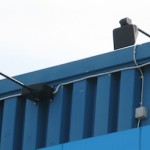EYE ON . EMC is a complex topic. To achieve the desired EMC characteristics of a product, in an efficient way, often requires collaboration between different professional groups. In addition to electronics designers, all parties involved should have the understanding and basic knowledge of the subject. The most concerned may be: mechanical designers, project managers, machine builders, installers, and others.








